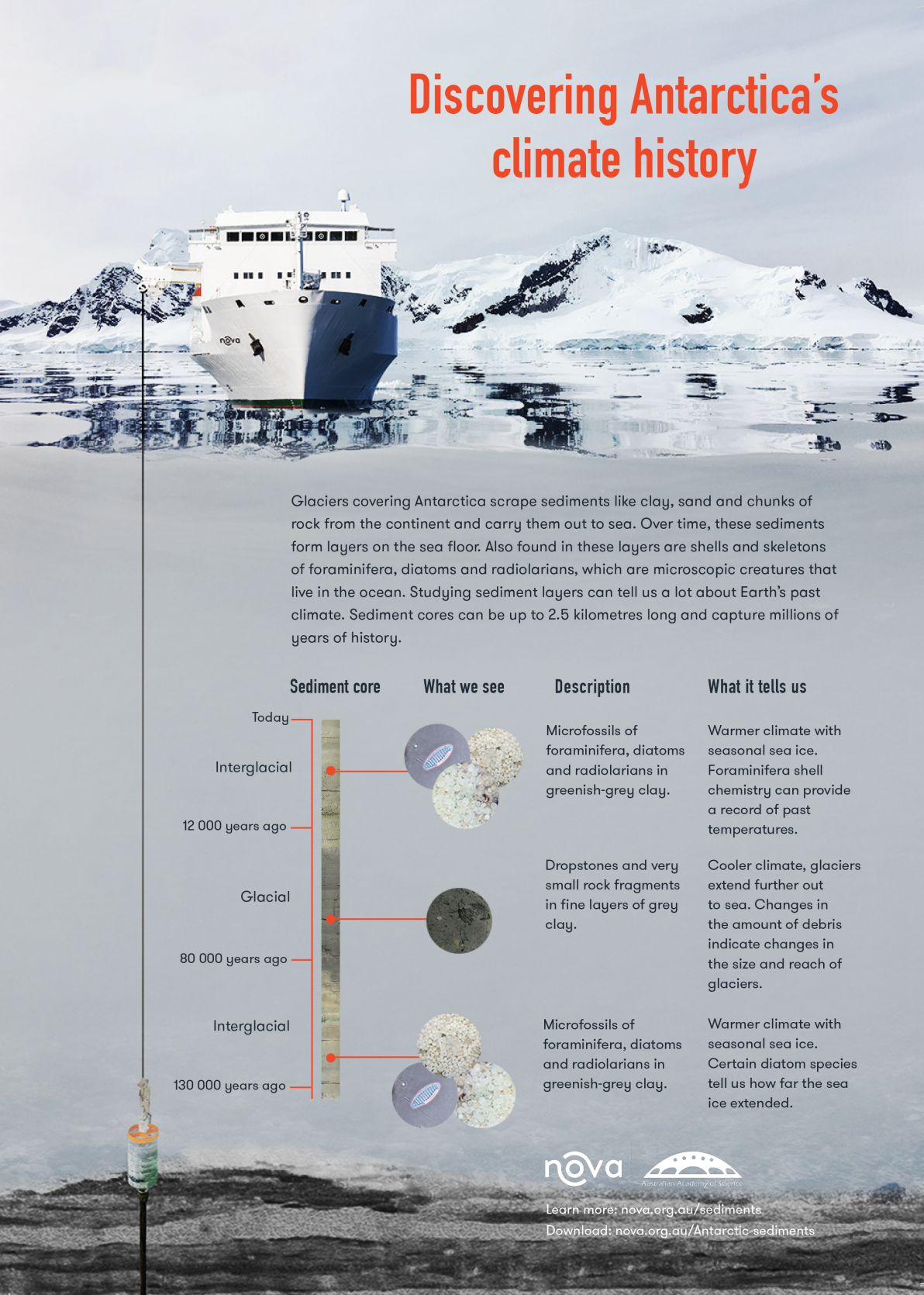- Home
- Infographics
- Mud and deep sea sediments
Mud and deep sea sediments
Discovering Antarctica's climate history
Glaciers covering Antarctica scrape sediments like clay, sand and chunks of rock from the continent and carry them out to sea. Over time, these sediments form layers on the sea floor. Also found in these layers are shells and skeletons of foraminifera, diatoms and radiolarians, which are microscopic creatures that live in the ocean. Studying sediments layers can tell us a lot about Earth's past climate. Sediment cores can be up to 2.5 kilometres long and capture millions of years of history.
Description
Microfossils of foraminifera, diatoms and radiolarians in greenish-grey clay.
What it tells us
Warmer climate with seasonal ice. Foraminifera shell chemistry can provide a record of past temperatures.
Description
Dropstones and very small rock fragments in fine layers of grey clay.
What it tells us
Cooler climate, glaciers extend further out to sea. Changes in the amount of debris indicate changes in the size and reach of glaciers.
Description
Microfossils of foraminifera, diatoms and radiolarians in greenish-grey clay.
What it tells us
Warmer climate with seasonal sea ice. Certain diatom species tell us how far the sea ice extended.






